Best Time to Prune a Maple Tree: How and When?
- February 12, 2024
- 1 comment
Discover the optimal pruning time for maple trees to ensure health & growth. Learn when & why it’s crucial to prune for best results. Pruning is an essential aspect of maintaining the health and appearance of maple trees. While the general advice might suggest that pruning can be done almost any time of the year, there are indeed specific periods when this task is most beneficial for the tree’s health and growth. The meta description briefly touches upon the importance of timing in pruning practices.
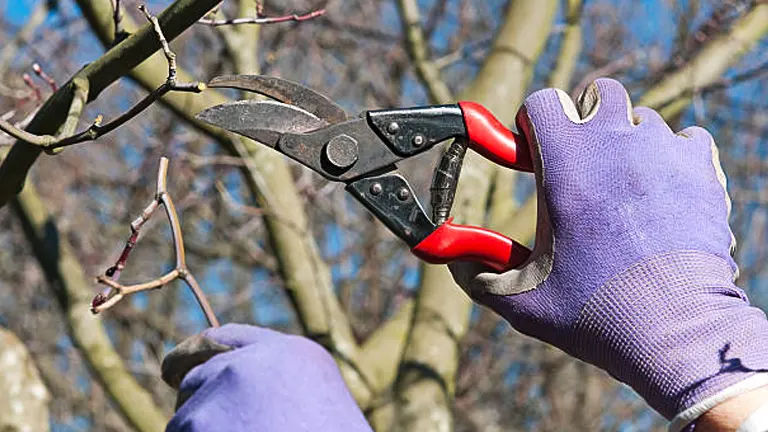
In this detailed exploration, we’ll delve into the nuances of why certain seasons are more favorable than others for pruning maple trees, providing insights into the lifecycle of these magnificent plants and how timely pruning can enhance their beauty, vitality, and longevity.
Table of Contents
- Understanding Maple Trees
- The Importance of Pruning
- The Science of Pruning
- Optimal Pruning Time for Maple Trees
- Times to Avoid Pruning
- How to Prune Maple Trees
- Aftercare Following Pruning
- Benefits of Pruning
- Common Pruning Mistakes and How to Avoid Them
- Conclusion
Understanding Maple Trees

Maples, with their diverse species, are renowned for their adaptability and beauty. They vary from the majestic sugar maple, a staple of North American forests, to the ornamental Japanese maple, prized for its delicate foliage and stunning colors. Each species has unique growth habits and requirements, making an understanding of their biological rhythms key to effective pruning.
The Importance of Pruning
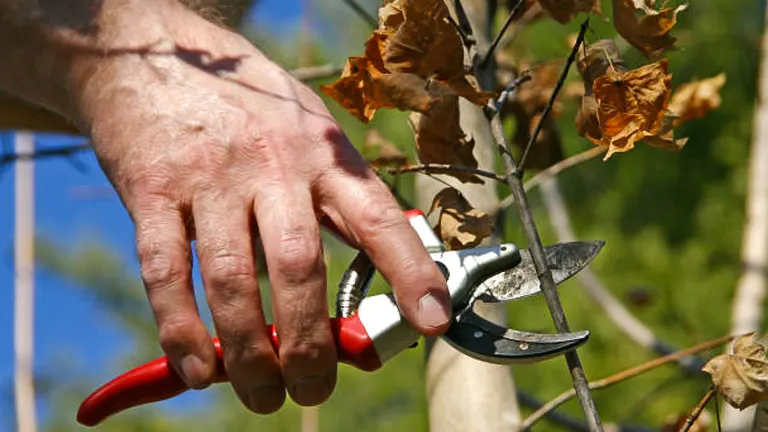
Pruning is not merely a cosmetic practice but a cornerstone of healthy tree management. It aids in removing potentially hazardous dead or diseased limbs, encourages a strong and aesthetically pleasing structure, and facilitates vibrant growth. Effective pruning practices are instrumental in extending the lifespan of maple trees and enhancing their contribution to our environment.
- Promotes Disease Recovery: By removing parts of the tree that are infected by disease, pruning can stop the spread of the disease and give the tree a better chance at recovery.
- Encourages Healthy Growth Patterns: Corrective pruning guides the growth of young trees, ensuring they develop a strong form and structure. This proactive approach can reduce the need for more significant interventions later in the tree’s life.
- Maintains the Tree’s Natural Shape: Thoughtful pruning respects and enhances a tree’s natural shape, promoting a balanced appearance that complements its genetic predisposition. This is crucial for the tree’s aesthetic and structural health.
- Improves Plant Health in Dense Canopies: In environments where trees are closely planted, pruning can help manage resources more efficiently, ensuring each tree has adequate access to sunlight and air, thus reducing competition and stress.
- Supports Pollination and Wildlife: Pruning can have indirect benefits on the ecosystem by improving the health of flowering trees, which in turn supports pollinators. Additionally, it can help maintain habitats for birds and other wildlife in the tree’s structure.
- Facilitates Inspection and Monitoring: Regular pruning sessions provide an opportunity for close inspection of the tree, allowing for early detection of issues such as structural weaknesses, pests, or diseases, which might not be visible with dense foliage.
- Adapts Trees to Their Urban Environment: In urban areas, pruning is essential for adapting trees to their surroundings, ensuring they do not obstruct sidewalks, streets, and buildings, while also helping them coexist with utility lines and other urban infrastructure.
- Extends Lifespan of Ornamental Trees: For ornamental trees, regular pruning not only maintains their aesthetic appeal but also extends their lifespan by reducing stress and strain on the tree’s structure, ensuring they remain a vibrant part of the landscape for longer.
The Science of Pruning
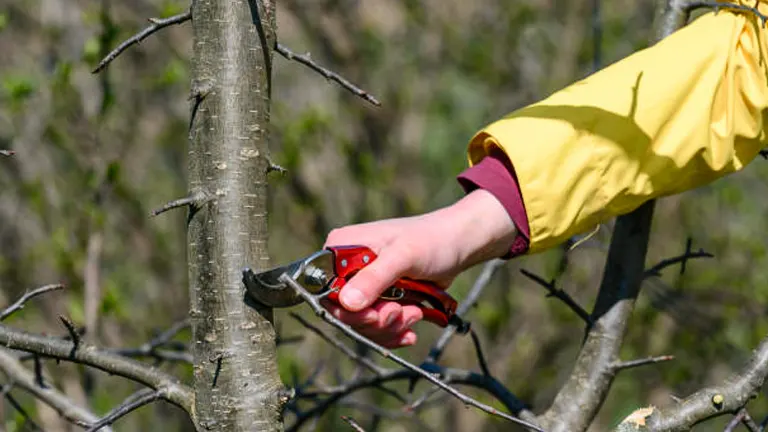
Pruning is not merely a mechanical task but a science that influences a tree’s life and development. It involves the selective removal of parts of a tree to control its shape, encourage productive growth, and eliminate potential hazards. The benefits of pruning are manifold, including the enhancement of a tree’s structure and stability, the mitigation of disease and pest issues, and the improvement of air circulation and light penetration within the canopy.
Detailed Scientific Table on Seasonal Pruning Effects
| Pruning Season | Physiological Effects | Ecological and Morphological Responses | Scientific Insights |
|---|---|---|---|
| Late Winter/Early Spring | Enhanced wound healing due to increased carbohydrate reserves. Minimized risk of pest and disease invasion post-pruning. | Stimulates vigorous growth as energy is redirected to fewer, remaining buds. Optimizes the tree’s structural integrity for the coming growth season. | Carbohydrate levels in trees peak during late dormancy, providing an energy surplus for wound healing and spring growth. Lower sap flow rates during this period reduce the likelihood of pathogen entry through wounds. |
| Summer | Directs growth to remaining branches, enhancing fruit size and quality in fruit-bearing species. Reduces total leaf area, affecting photosynthetic capacity and potentially altering water use efficiency. | Allows for precise shaping and control over the tree’s form as growth can be more easily predicted and managed. Reduces the likelihood of storm damage by removing potentially hazardous limbs. | Pruning during full leaf out reduces the tree’s photosynthetic area, which can concentrate growth energy into selected branches, leading to more robust development where desired. This practice also helps in managing water stress during peak transpiration periods by reducing the leaf surface area. |
| Fall | Not recommended due to slow healing and increased infection risk. Pruning in fall can lead to delayed wound closure and increase susceptibility to pathogens as trees prepare for dormancy. | Pruning cuts made in fall are more susceptible to pathogen invasion and do not heal as rapidly due to the tree’s slowing metabolism. | Studies show that trees pruned in fall have a higher incidence of decay and disease entry points due to the inability to effectively compartmentalize wounds before the onset of winter. The metabolic rate of trees slows as they enter dormancy, delaying the healing process and increasing vulnerability to infection. |
This table incorporates a blend of physiological effects, ecological and morphological responses, and insights from scientific studies to provide a thorough understanding of how pruning impacts trees differently across seasons. By aligning pruning practices with the natural biology and ecological requirements of trees, arborists and gardeners can optimize tree health, growth, and resilience.
Optimal Pruning Time for Maple Trees
Understanding Maple Tree Dormancy and Growth Cycles
Maple trees, like many deciduous species, go through a cycle of dormancy in the winter followed by a burst of growth in the spring. The dormant period, when the tree’s metabolic activity is at its lowest, presents an ideal time for pruning for several reasons:
- Reduced Sap Flow: Pruning during dormancy minimizes sap loss. While maple trees are known for their sap production—especially in late winter to early spring—pruning before the sap starts running in earnest (typically in late winter) can avoid the “bleeding” effect that can stress the tree.
- Visibility and Structure Assessment: Without leaves, the structural form of the tree is easier to assess, allowing for more strategic pruning decisions that can improve the tree’s overall shape and health.
- Disease and Pest Minimization: The likelihood of transmitting diseases or attracting pests is lower during the cold months, as many pathogens and pests are inactive.
- Energetic Considerations: Pruning before the spring growth spurt means the tree can direct its energy towards healing the pruning wounds and into the growth of remaining branches, improving vitality and vigor.
Table: Optimal Pruning Time for Maple Trees
| Factor | Optimal Pruning Time | Rationale |
|---|---|---|
| Dormancy | Late Winter | Minimizes sap loss and stress on the tree. |
| Sap Flow | Before “Sap Rise” in Early Spring | Avoids excessive bleeding, conserving the tree’s energy reserves. |
| Structural Visibility | Winter (Leafless Period) | Facilitates better decision-making regarding which branches to prune for structural integrity. |
| Pest and Disease Activity | Winter to Early Spring | Reduces the risk of disease transmission and pest infestation. |
| Temperature for Wound Healing | Late Winter, before Spring Growth | Ensures wounds can heal effectively without risk of frost damage. |
Additional Considerations for Pruning Maple Trees
- Specific Species Variations: Different maple species may have slightly different sap flow timings and growth responses. Adjust pruning times slightly based on local climate conditions and specific tree behavior.
- Environmental Stress Factors: Avoid pruning during periods of drought or extreme heat, as these conditions can exacerbate stress on the tree.
- Pruning Extent: Limit pruning to no more than 25% of the tree’s total canopy in a single year to avoid overstressing the tree.
By integrating these detailed insights and scientific considerations into your pruning practices, you can ensure that your maple trees are pruned at the most opportune time to promote their health, growth, and aesthetic appeal. This approach aligns with a deep understanding of tree physiology and environmental factors, offering a nuanced guide to optimal pruning practices.
Times to Avoid Pruning
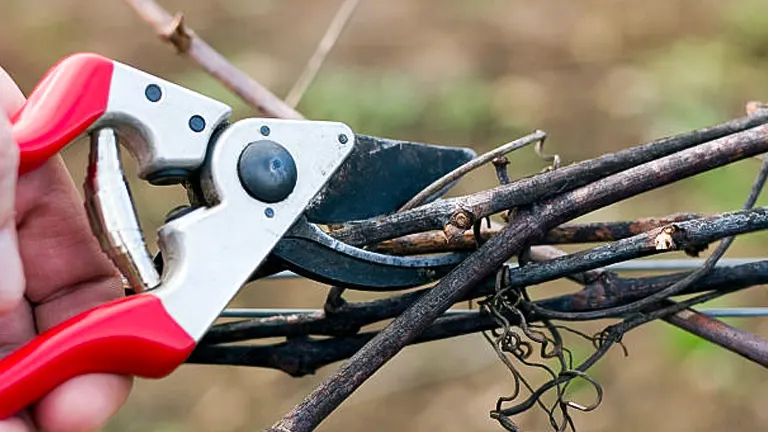
While understanding the optimal pruning times is crucial, recognizing when not to prune is equally important. Fall emerges as a period to avoid pruning maple trees. During autumn, trees are preparing for dormancy, and cuts made in this season can interfere with the natural hardening process. Furthermore, pruning wounds heal slower in fall, increasing susceptibility to infections and pests. Additionally, the sap flow in maple trees, which increases in early spring, can lead to excessive bleeding if pruned too late in the season, potentially weakening the tree.
Pruning Impact by Seasonal Phase
| Seasonal Phase | Physiological Activity | Pruning Impact | Considerations |
|---|---|---|---|
| Fall (Autumn) | Energy conservation, initiation of dormancy | Increased risk of infection, slower wound healing | Avoid pruning to allow natural dormancy processes. |
| Winter | Dormant, minimal metabolic activity | Lower risk of disease transmission, but cold damage possible | Best time for major pruning, avoiding very cold periods. |
| Early Spring | Sap flow begins, metabolic activity increases | Risk of excessive sap loss, energy depletion | Prune before sap flow peaks, typically before late winter thaw. |
| Late Spring to Summer | Active growth, energy allocation to new shoots and leaves | Minimal sap loss, but cuts heal slower due to energy diversion | Suitable for minor corrective pruning and deadwood removal. |
Additional Insights for Optimal Pruning
- Temperature and Healing: Research indicates that optimal wound healing occurs at temperatures between 10°C and 20°C (50°F to 68°F), suggesting late winter to early spring pruning in many climates.
- Sap Flow and Seasonal Timing: Maple trees can lose a significant portion of their stored water through sap loss if pruned during peak sap flow periods. It’s estimated that a single pruning cut can result in several liters of sap loss per day under peak conditions, underscoring the importance of timing.
- Disease and Pest Dynamics: The prevalence of specific pathogens and pests can vary seasonally. For instance, the risk of oak wilt spread is highest in late spring and summer, highlighting the need for seasonal awareness in pruning decisions.
How to Prune Maple Trees
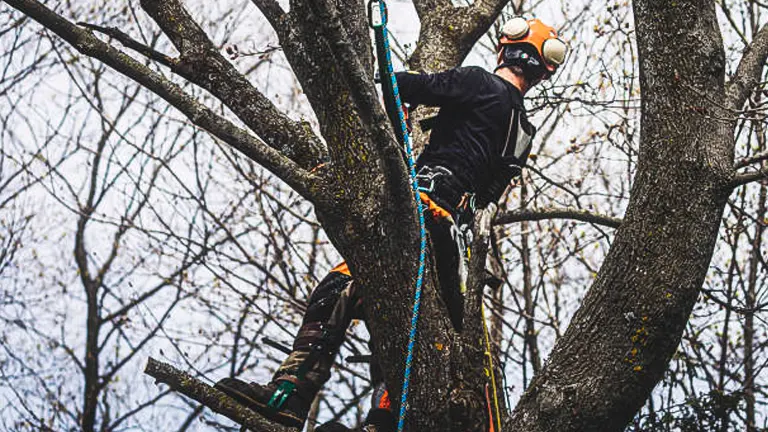
Pruning maple trees with precision and care is essential for their health and appearance. Here’s a step-by-step guide to effective pruning:
- Preparation: Equip yourself with the right tools, such as sharp pruning shears, loppers, and a pruning saw. Clean and disinfect tools before use to prevent the spread of disease.
- Assessment: Begin with a thorough assessment of the tree’s structure. Identify dead, damaged, or diseased branches, as well as any crossing or rubbing limbs that can cause wounds and openings for pests and diseases.
- Pruning Cuts: Make clean cuts close to the branch collar without damaging it, as this area contains cells crucial for healing. For larger branches, use the three-cut method to prevent bark tearing: one undercut, a second cut further out to remove the branch weight, and a final cut just outside the branch collar.
- Thinning: To improve light penetration and air circulation, thin out crowded areas within the canopy. Focus on removing interior branches that are smaller in diameter, ensuring not to remove more than 25% of the tree’s crown in a single season.
- Shaping: While natural shape is best for maple trees, minimal shaping can be done for aesthetic purposes or to control size. However, avoid excessive topping or cutting back, as this can lead to weak growth and increased susceptibility to disease and pests.
Aftercare Following Pruning
Aftercare is pivotal in ensuring a maple tree recovers well from pruning and continues to grow healthily:
- Watering: Ensure the tree receives adequate water, especially during dry periods, to help reduce stress and promote healing.
- Mulching: Apply a layer of organic mulch around the base of the tree to help retain soil moisture, regulate temperature, and reduce weed competition.
- Monitoring: Keep an eye on pruned areas for signs of disease or pest infestation. Early detection and treatment can prevent further damage.
- Fertilization: While not always necessary, a light application of a balanced fertilizer in the spring following pruning can support vigorous growth. However, avoid over-fertilization, which can lead to excessive, weak growth.
Benefits of Pruning
- Promotes Tree Health: Pruning removes dead or dying branches harmed by disease, infestation, or injury, preventing further spread of decay and enhancing the overall health and vigor of the tree. This proactive measure allows the tree to focus its energy on producing healthy, new growth.
- Improves Structure and Stability: By selectively removing branches, pruning encourages the development of a strong tree structure. This is particularly important for young trees, as it promotes a desirable form and prevents structural problems that could lead to safety hazards in the future.
- Enhances Safety: Eliminating weak, dead, or broken branches reduces the risk of them falling and causing injury or damage to property. Pruning also ensures clear visibility for streets and sidewalks, and prevents tree limbs from interfering with power lines or obstructing traffic signals.
- Stimulates Growth: Strategic pruning can invigorate trees, stimulating growth in areas that benefit the tree’s overall structure and appearance. For fruit trees, it can increase the quality and quantity of the crop by allowing more light and air to reach the fruits.
- Controls Pest and Disease: Removing infected or infested branches helps control the spread of pests and diseases. Pruning also opens up the canopy, improving air circulation and reducing the moist conditions that many pests and diseases thrive in.
- Improves Fruit Production and Quality: For fruit-bearing trees, pruning is essential for balancing fruit production and promoting healthy growth. It ensures fruits receive adequate sunlight and air, which can improve size, color, and taste, and also supports the sustainability of production year after year.
- Aesthetic Appeal: Pruning shapes trees to enhance the aesthetic appeal of a landscape. Well-pruned trees are more attractive and can significantly increase the visual appeal and value of a property.
- Encourages Biodiversity: By maintaining healthy trees through pruning, we support a diverse ecosystem. Healthy trees provide shelter and food for a variety of birds, insects, and other wildlife, contributing to local biodiversity.
- Optimizes Photosynthesis: Removing excess foliage can improve the tree’s photosynthetic efficiency. Less crowded leaves receive more light, enhancing the tree’s energy production and overall growth.
- Reduces Shade and Wind Resistance: Proper pruning reduces a tree’s canopy density, allowing wind to pass through more easily and reducing the risk of wind damage. It also moderates the amount of shade cast, which can be beneficial for underplanted areas requiring more sunlight.
- Enhances View: Selective pruning, often referred to as vista pruning, can be performed to enhance views from a property without compromising the tree’s health. This technique carefully balances the desire for an improved view with the need to maintain the tree’s structural integrity.
- Increases Lifespan: Regular pruning is associated with longer tree lifespans. By addressing health, structural, and safety issues early on, trees are better equipped to thrive and survive for many years, contributing to the environment and community aesthetics.
Common Pruning Mistakes and How to Avoid Them
Pruning, while beneficial when done correctly, can lead to adverse effects if not approached with care and understanding. Here are some common mistakes to avoid:
- Over Pruning: Removing too much foliage at once can stress the tree, leading to weak and spindly growth. Always adhere to the rule of not removing more than 25% of the tree’s crown in a single season.
- Improper Cuts: Cuts made too close to the trunk can remove the branch collar, hindering the tree’s ability to heal. Conversely, leaving too large a stub can also prevent proper healing and invite pests and disease. Ensure cuts are clean and just outside the branch collar.
- Pruning at the Wrong Time: As discussed, pruning during the tree’s dormant season is ideal. Avoid pruning during fall or when the tree is actively growing in spring and early summer, as this can lead to excessive sap loss and stress the tree.
- Topping the Tree: Cutting off the top of the tree to reduce its size is harmful and leads to a weak structure prone to damage and disease. Instead, focus on thinning and removing specific branches to control size and shape.
- Neglecting Sanitation: Failing to clean and disinfect pruning tools between trees can spread disease. Always clean your tools with a disinfectant before moving on to the next tree.
Conclusion
Understanding the best time and methods for pruning maple trees is essential for their health and beauty. By following the guidelines outlined in this article, you can ensure your maple trees remain a vibrant and valuable part of your landscape. With the right care, these magnificent trees can provide enjoyment for generations to come.
FAQs
- Can I prune my maple tree in the summer?
It’s best to avoid heavy pruning in the summer as this can stress the tree during a time of active growth. However, you can do light pruning to remove dead or diseased branches, or to correct growth that poses a safety hazard. - Is there a specific month that is considered ideal for pruning maples?
The ideal time to prune maple trees is in late winter or early spring, just before the growth starts but after the extreme cold has passed. This typically falls between February and March for many climates. - Will pruning a maple in the fall harm the tree?
Pruning in the fall is not recommended because the wounds heal slower as the tree is entering dormancy, and there is a higher risk of fungal infections due to the damp weather commonly associated with autumn. - Can pruning a maple tree during sap flow in spring cause harm?
Pruning during early spring when the sap is flowing can lead to ‘bleeding.’ While this isn’t usually harmful to the tree, it can be messy and is best avoided by pruning just before the sap starts to flow. - How can I tell if it’s too early to prune if winter weather is unpredictable?
If winter conditions persist, it’s better to wait until you have a clear indication that the harshest weather has passed. A good indicator is consistent above-freezing temperatures during the day. - Does the age of the maple tree affect the best time to prune?
Not particularly. Both young and mature maple trees are best pruned in late winter to early spring. However, the reasons differ: young trees are pruned for shaping and training, while mature trees are pruned for health and maintenance. - If I miss the late winter period, should I wait until next year to prune my maple?
If you miss the late winter window, you can still prune until early spring before new growth begins. If you’ve missed this period as well, it’s best to wait until mid-summer to do light pruning if necessary. - Are there any exceptions to the late winter/early spring pruning rule for maples?
The main exception would be if there are safety concerns, such as broken or damaged limbs that pose a risk. These should be addressed immediately, regardless of the season, to maintain safety.
As the seasons change, keep in mind that the quiet slumber of late winter to early spring offers the perfect moment to prune your maple trees. Mark your calendars for this crucial window when trees are best prepared for a trim, ensuring they’ll flourish and stand robust for the year to come. Happy pruning!

Benjamin Brooks
Forestry AuthorGreetings! I'm Benjamin Brooks, and my journey over the past 15 years has revolved around the fascinating realms of content creation, expertise in snow clearing, and the intricate world of lumberjacking and landscaping. What began as a simple curiosity about the natural world and heavy machinery has evolved into a passionate profession where my love for crafting words intertwines seamlessly with my lumberjacking and garden skills.

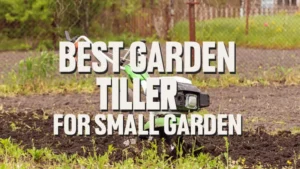











Would you please share the studies you reference that "show that trees pruned in fall have a higher incidence of decay and disease entry points due to the inability to effectively compartmentalize wounds before the onset of winter?" Thanks!
Jack Magai
March 16, 2024 3:21 pm